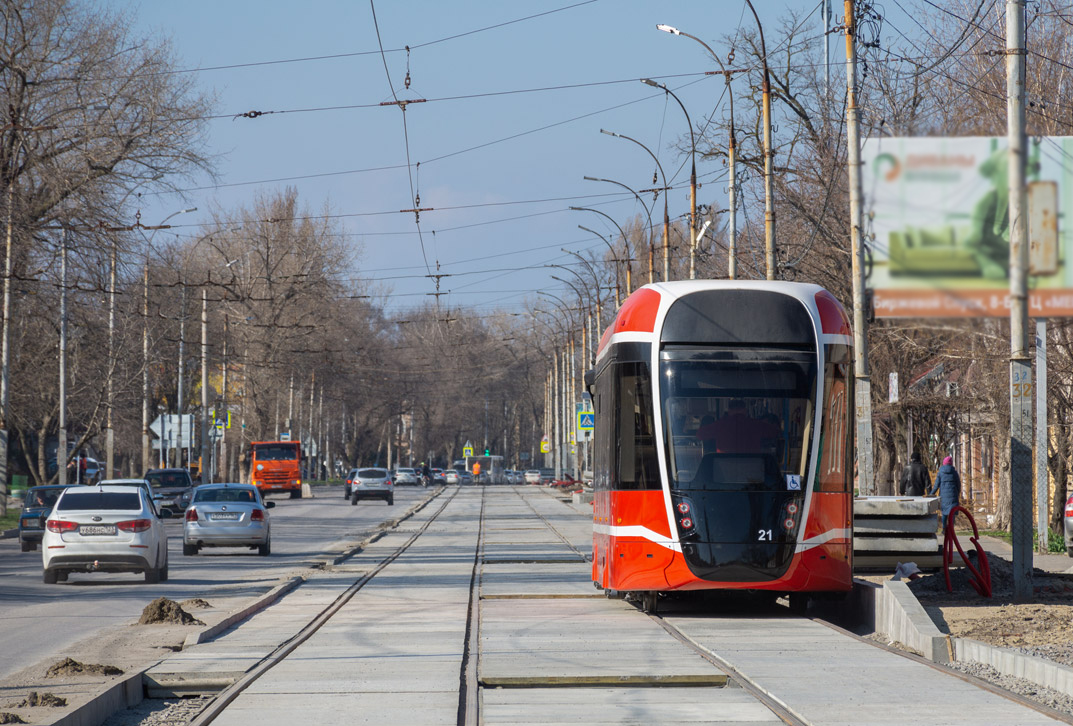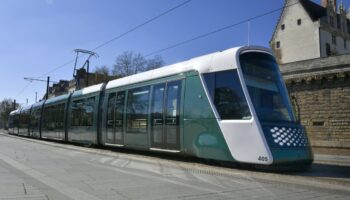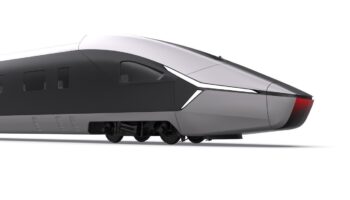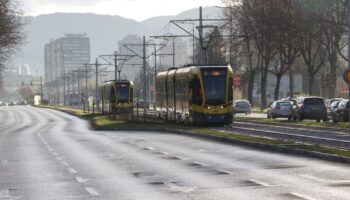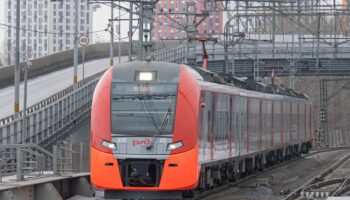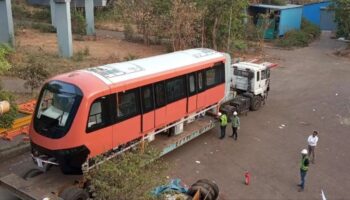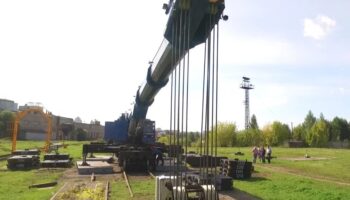Russia: Such a statement was made by Roman Novikov, CEO of the Ust-Katav car-building plant (UKCP). The manufacturer plans to supply five-section trams with autonomous technologies for the Vostochny Cosmodrome as reported in 2020.
“The start of assembly of the first autonomous tram is scheduled for the end of the year”, Novikov said in an interview with TASS. Earlier, in October 2020, the UKCP press service announced the start of pre-project work to provide the Vostochny Cosmodrome with tram services. In particular, it was planned to supply five-section low-floor trams, in which autonomous technologies were supposed to be used.
At the same time, Novikov said that the trams automation trials are being carried out by UKCP together with SPA Automatics (both are parts of Roscosmos). As to the UKCP website, the five-section low-floor 71-665 model is presented as a vehicle under development. It is stated that it will be based on an axle-less bogie that is without equals in Russia. A separate motor will be used on each of its wheels, which should provide independent control of the angular speed of each wheel rotation, reduce wheel wear and increase smoothness. As Novikov said in an interview with TASS in February 2020, this tram will have a “good” turning radius, and its price threshold is “not much” different from a three-section one. The updated render of 71-665 tram was shown last November.
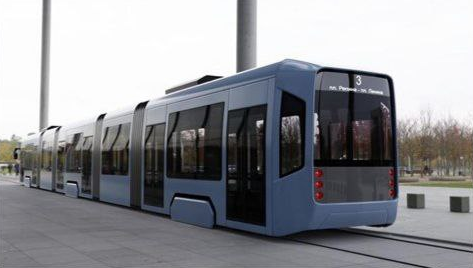 3d-render of the five-section 71-655 tram being developed by UKCP. Source: Roscosmos
3d-render of the five-section 71-655 tram being developed by UKCP. Source: Roscosmos
Alongside UKCP, the work on automation also takes place in Russia by the largest national trams manufacturer – PC Transport Systems (PC TS). The first tests of the Vityaz-M autonomous tram took place in August 2018 in St. Petersburg. In 2019, the tram also underwent tests in Moscow: it included the Cognitive Tram Pilot control system, which helps the driver in emergency situations (developed by Cognitive Pilot).
Also, the Moscow Department of Transport announced plans to conduct joint tests of an autonomous tram with the Yandex IT-company this year. At the first stage, testing should take place in the depot and on the city lines at night; towards the end of the year, it is planned to start autonomous tram trials with passengers. It should be noted that Yandex has not yet made any public statements about the development of computer vision systems for LRV.
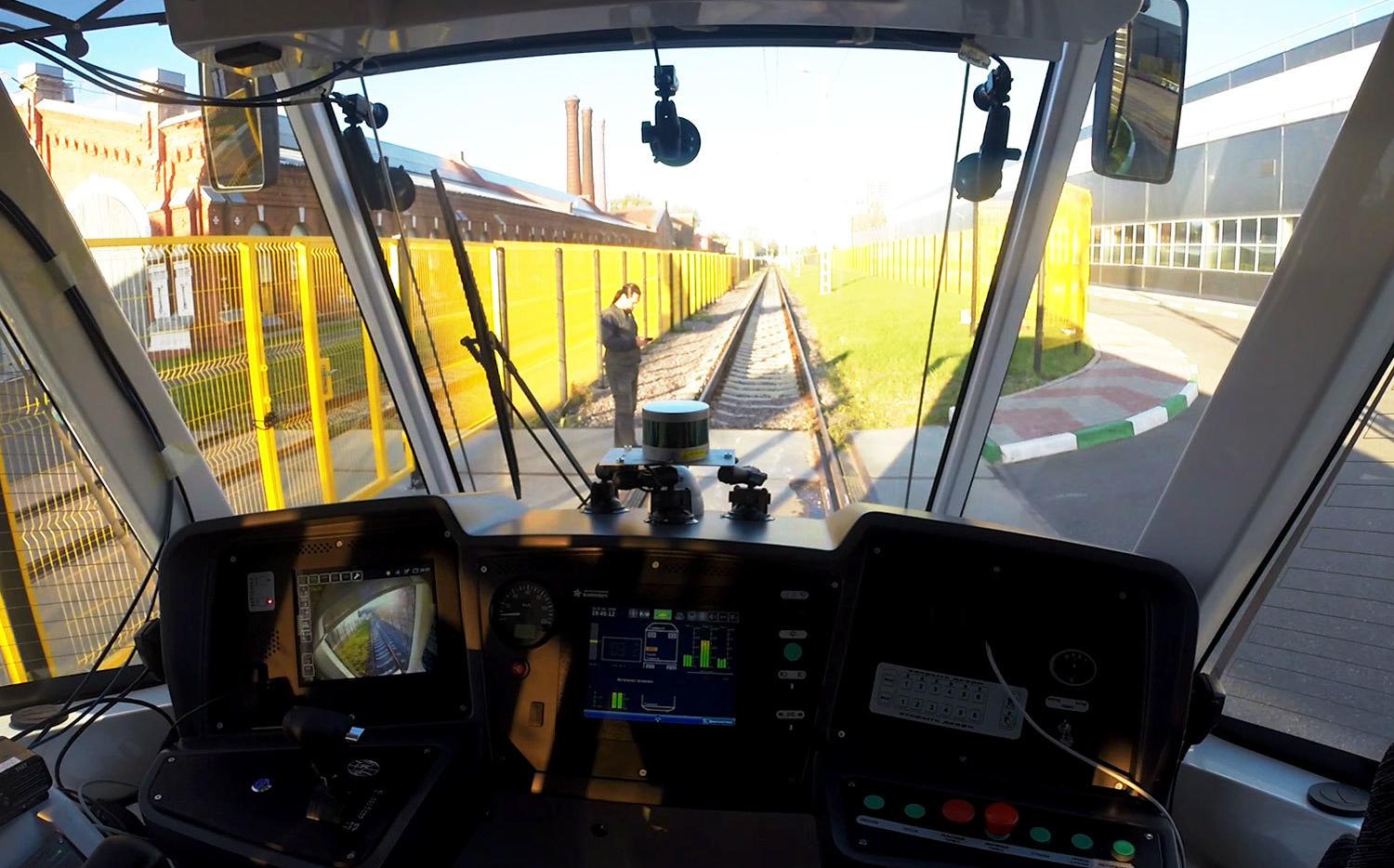 Testing the Cognitive Pilot vision system on the PC TS tram. Source: Cognitive Technologies
Testing the Cognitive Pilot vision system on the PC TS tram. Source: Cognitive Technologies
Last year, in an interview with the Railway Equipment Journal, President of PC TS Felix Vinokur noted that the technical solution for the implementation of the “autonomous” GoA4 automation level is ready, but the regulatory framework needs to be updated. According to the order of the Government of the Russian Federation, this year the Ministry of Transport should provide a draft of an act on highly automated and fully automated vehicles.
Among the world’s major manufacturers Siemens Mobility should be noted. The company started testing a vision system in Budapest last autumn. Siemens Mobility announced the start of the development of an autonomous tram in 2018, the operation of a prototype without a driver was demonstrated in August last year at the Potsdam depot. The company plans to have this technology ready for commercial operation by 2026.
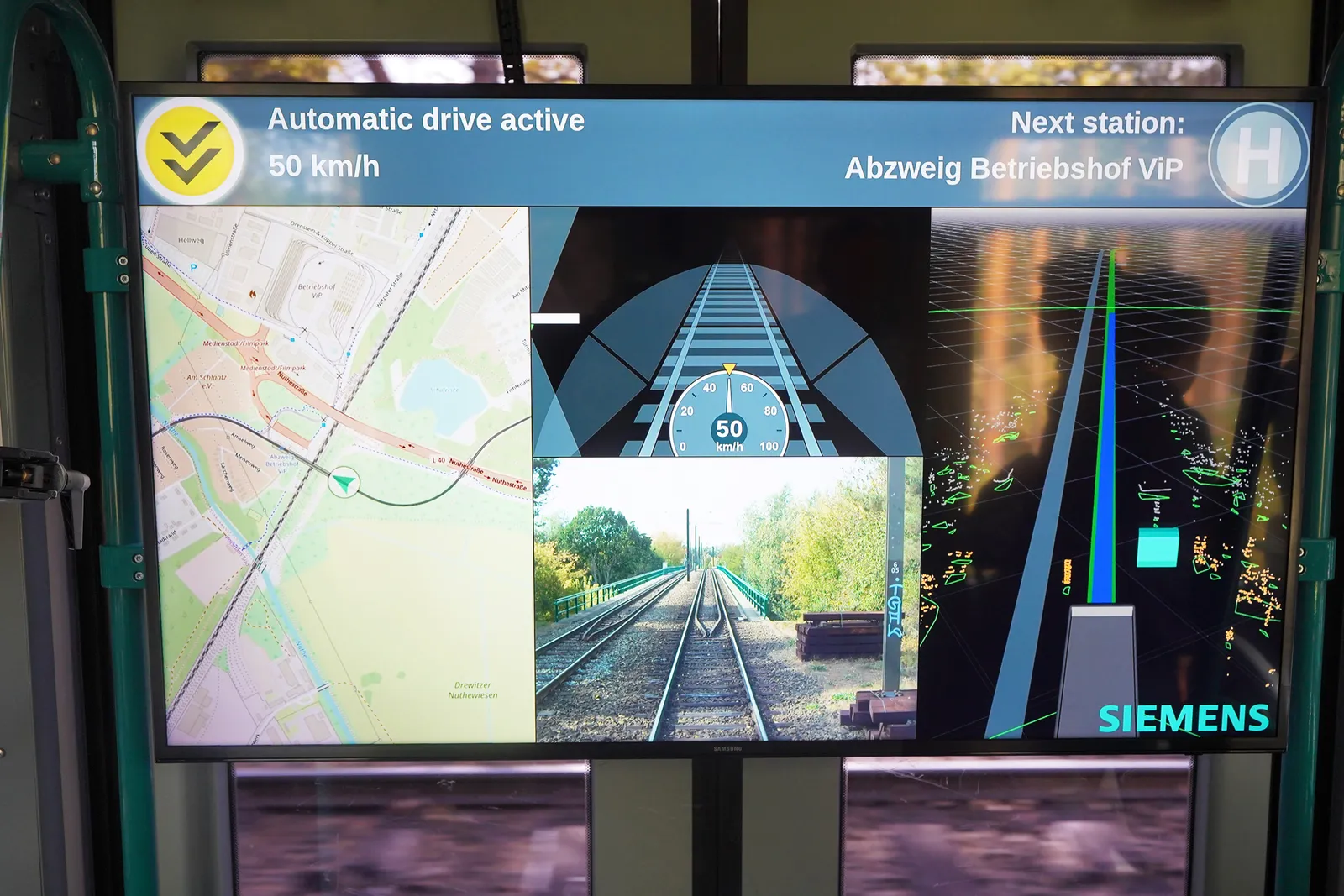 Demonstration of the Siemens tram automation system, 2018. Source: wired.com
Demonstration of the Siemens tram automation system, 2018. Source: wired.com
Earlier, UKCP announced plans to expand its production capacity. At the beginning of the year, it became known about the intentions of the plant to invest 958 mln RUR ($12 mln USD) in the construction of a new workshop. According to the estimates of Alexei Teksler, the Chelyabinsk region governor, the new workshop will increase the plant’s capacity three times from 75-90 units per year up to 210-220 trams. Last week, in an interview with TASS, Roman Novikov also stated that as of April, the producer was almost 100% contracted, and negotiations are being worked out for a two to three year perspective. The most modern UKCP vehicles, 71-628M trams (were planned for delivery to Moscow), have recently begun to arrive and be tested in Taganrog, Rostov region. The rolling stock is supplied as part of cooperation with Sinara – Transport Machines (STM), which is implementing a large-scale concession project of tram network management of the city.
In the near future, significant demand for the purchase of new trams is expected in Russia. At the end of 2021, the Russian Government approved mechanisms that allow the regions to receive loans from the state budget for the integrated development of urban electric transport. As Prime Minister of Russia Mikhail Mishustin pointed out, with the use of this tool, it is planned to purchase over 1500 trams. According to the estimates of the First Transport Infrastructure Company (FTIC), International Association of Urban Electric Transport Enterprises (MAP GET) and the Strategy Partners agency, from 1,570 to 2,486 trams may be purchased in Russia in 2022-2030, that is an average of 174-276 trams per year. Also, as to their data, 250 new trams were delivered to Russian cities in 2021 (+17% by 2020).



